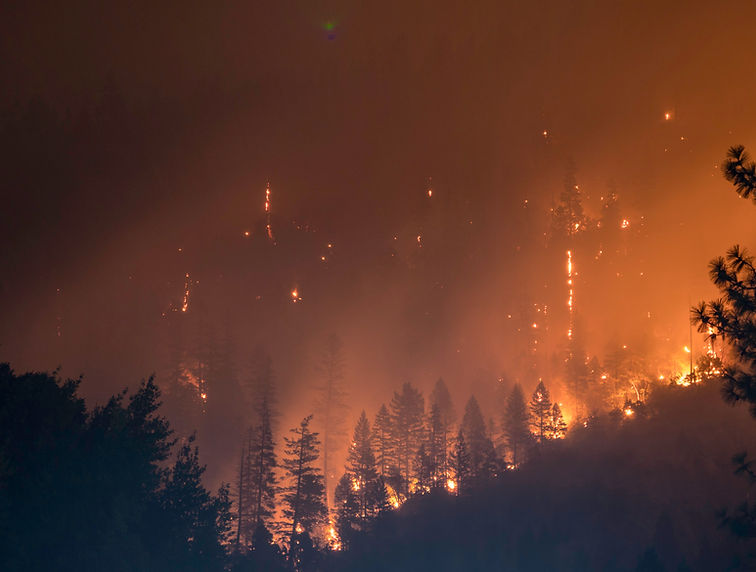
We are Failing!





Current Situation
Scientists have been concerned for over a hundred years that carbon dioxide emissions from the burning of fossil fuels will cause global warming by retaining some of the radiation of the sun just like the glass does in a greenhouse. Overtime, it was discovered that in addition to carbon dioxide, methane, nitrous oxide and fluorocarbons also cause significant warming and these gases are now collectively referred to as greenhouse gases.
Eventually, the United Nations created a series of conferences (called conference of parties or COP conferences ) where all nations were invited to work together in finding solutions to global warming or climate change. The first COP conference was held Germany in 1995. These UN conferences continued to be held ever since with the hope of setting global targets for the reduction of greenhouse gas emissions. Some of the COP conferences succeeded in setting targets, unfortunately, none were legally binding and in general nations failed to meet them. At the Paris UN Climate Change Conference (COP21) in 2015 was an example of a meeting where there was a "legally binding" agreement to communicate on the targets (but not on reaching the targets) and 196 parties agreed on the need to set targets for holding the global average temperature well below 2 degrees Celsius (ideally below 1.5 degrees) above the earth’s pre-industrial temperature. According to the United Nations, to limit global warming to 1.5 degrees, greenhouse gas emissions must peak before 2025 and decline by 43% by 2030 (The Paris Agreement | UNFCCC). Unfortunately, in 2024, greenhouse gases are still increasing and a 43% reduction by 2030 seems extremely unlikely.
At the COP26 conference, in 2021, the parties agreed that methane reduction was critical for reducing the effects of climate change. At the COP28 conference, finally the delegates were able to agree that fossil fuels are the root cause of climate change and need to be phased out.
Unfortunately, none of the goals set at these COP conferences have been met and in 2023, we already reached a global temperature rise of 1.5 degrees and we are seeing dramatic changes and extreme weather events such as extreme heat, floods, major droughts and forest fires are happening at increasing frequency in all regions of the world.
While reduction targets were not met, it is true that governments have become more and more aware of the necessity to find renewable energy alternatives and therefore launched programs to incentivize the implementation of technologies, such as wind and solar and thanks to that, these technologies have evolved over the years to be quite cost effective. As they have become deployed more widely, some countries managed to reduce their greenhouse gas emissions but the impact of these reductions on a global scale has been overtaken by the increased need for fossil fuel energy in developing countries. As a result, during the last twenty-seven years our greenhouse gas emissions have continued to increase exponentially and therefore we are failing.
Overall, we are failing to slow down greenhouse gas emissions and therefore we are on track toward major catastrophes that could include millions of people dying from heat, fires, floods and societal collapse. Our greatest fear is that at some point soon, we hit tipping points, such as the release of carbon dioxide and methane from the arctic, and warming increases much faster than scientists currently assume. In our view, reducing greenhouse gases has become a global emergency because governments are continuing to fail to force significant reductions in greenhouse gas emissions.
In developed and democratic countries, the main reason for our failure is that curbing greenhouse gases sets governments against the interest of powerful corporations who are providing fossil fuels and other activities that produce greenhouse gases. These corporations employ powerful lobbyists to ensure their interests are protected. Furthermore, some of these corporations have managed to ensure that voters are divided and confused by climate change so that politicians need not fear voter backlash due to lack of action on climate change. Their ways of dividing the public are many and complex, some of the methods are listed below:
-
Indirectly fund groups that confuse the public by claiming that climate is not man made.
-
Fund political organizations that make climate change into a bipartisan political issue.
-
Fund organizations that frighten people with the economic consequences of doing climate change mitigation.
-
Fund programs that make individuals feel like their lifestyle is responsible for climate change.
-
Publicize activities as potential climate change solutions that will provide false hope but will delay action.
Overall, these methods have worked well and only a small percentage of voters consider climate change as their main issue during elections. As such, significant climate change actions are rarely driven by governments in countries where fossil fuel companies are politically strong. In addition, so far, climate change has been considered as a relatively far off issue and human nature tends to react well to immediate danger but generally doesn’t react well to future undefined danger. This explains slow reactions in some countries even without industrial lobbying as well as in dictatorial countries where, in most cases, the short-term interest of the dictators is ultimately the only thing that matters.
A reminder of what sectors are mostly responsible for the Greenhouse gases show that we will only change the current situation if the large emitters take it seriously to reverse the diagram below.


In the end, it is in everybody’s interest to avoid climate change disasters and fortunately there is a path forward as outlined under our Path to Success tab.
We are Failing!




